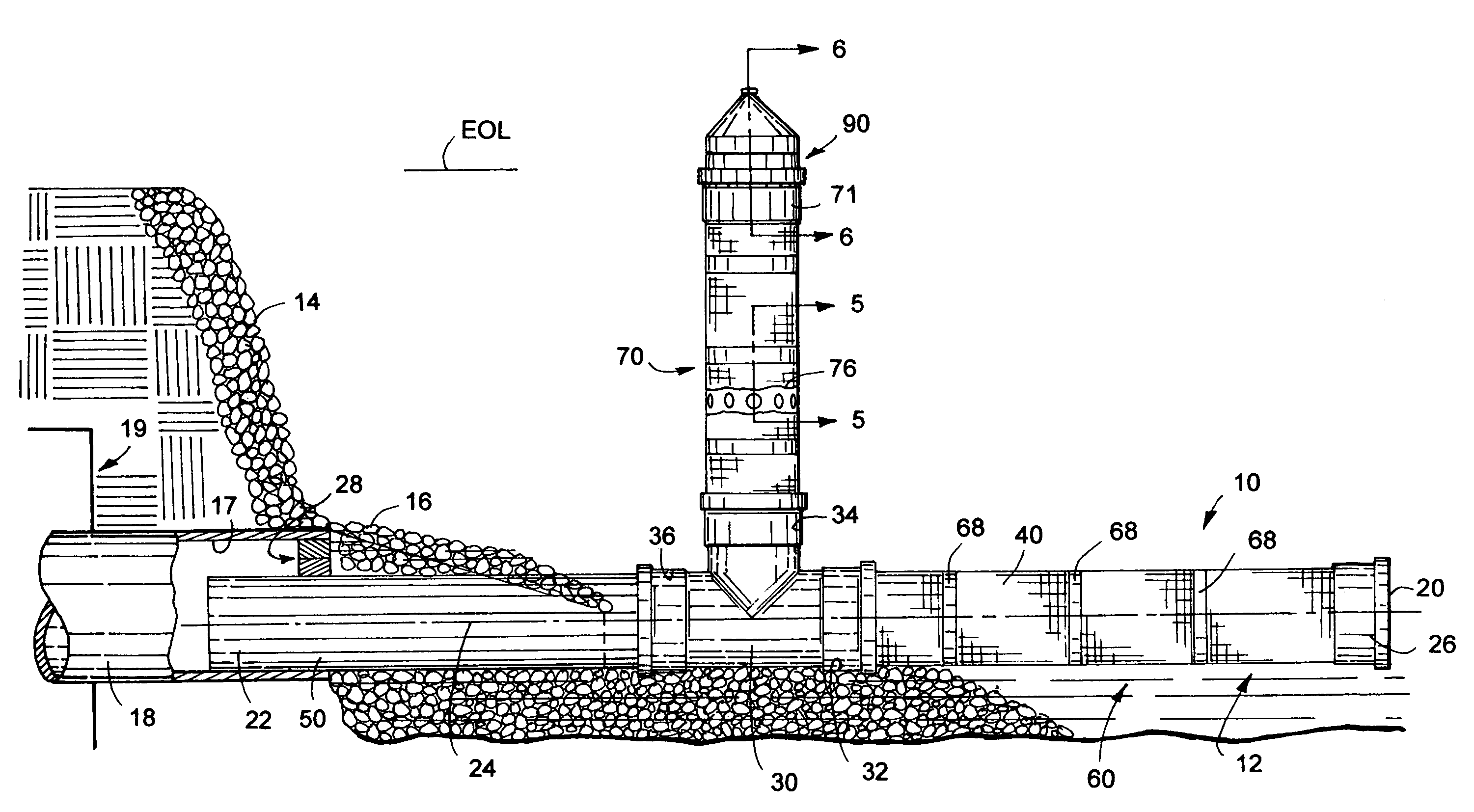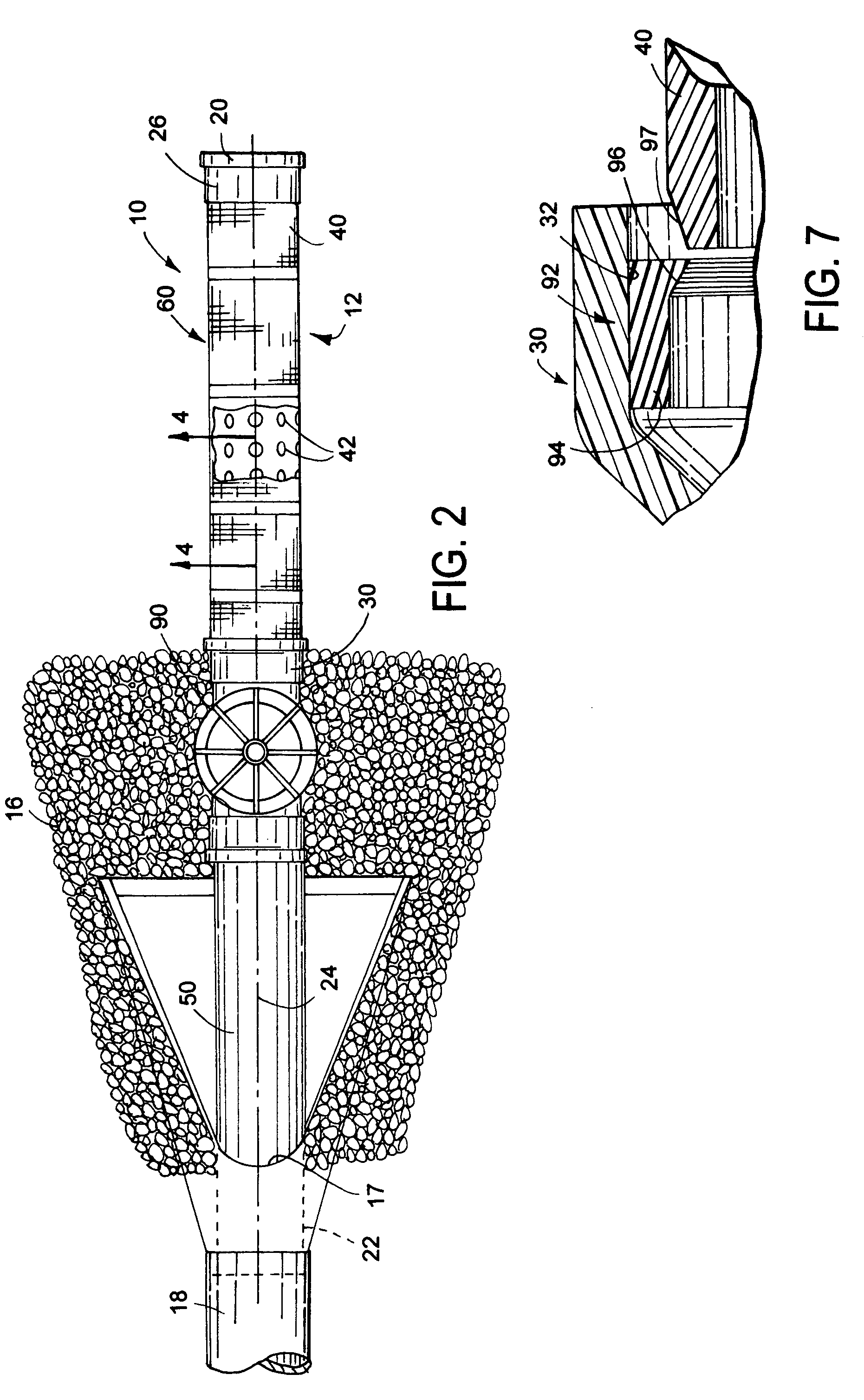Stormwater pollution management apparatus and method of using same
a pollution management and stormwater technology, applied in water cleaning, sewage draining, separation processes, etc., can solve problems such as increasing the potential for flooding, subject to erosion, and damage to downstream properties and streams
- Summary
- Abstract
- Description
- Claims
- Application Information
AI Technical Summary
Benefits of technology
Problems solved by technology
Method used
Image
Examples
Embodiment Construction
[0027]While the present disclosure is susceptible of embodiment in multiple forms, there is shown in the drawings and will hereinafter be described preferred embodiments of the disclosure, with the understanding the present disclosure sets forth embodiments which are not intended to limit the disclosure to the specific embodiments illustrated and described.
[0028]Referring now to the drawings, wherein like reference numerals indicate like parts through the several views, FIG. 1 shows a stormwater pollution management apparatus according to the present disclosure and generally identified by reference numeral 10. In one form, the stormwater pollution management apparatus 10 includes a sediment water intake assembly, generally identified by reference numeral 12. As shown in FIG. 1, and during use, the sediment water intake assembly 12 is adapted to be supported proximately at an acceptable upper surface of water in a stormwater basin 14. Gravel 16 (typically #4 stone although other type...
PUM
| Property | Measurement | Unit |
|---|---|---|
| Length | aaaaa | aaaaa |
| Size | aaaaa | aaaaa |
| Distance | aaaaa | aaaaa |
Abstract
Description
Claims
Application Information
 Login to View More
Login to View More - R&D
- Intellectual Property
- Life Sciences
- Materials
- Tech Scout
- Unparalleled Data Quality
- Higher Quality Content
- 60% Fewer Hallucinations
Browse by: Latest US Patents, China's latest patents, Technical Efficacy Thesaurus, Application Domain, Technology Topic, Popular Technical Reports.
© 2025 PatSnap. All rights reserved.Legal|Privacy policy|Modern Slavery Act Transparency Statement|Sitemap|About US| Contact US: help@patsnap.com



